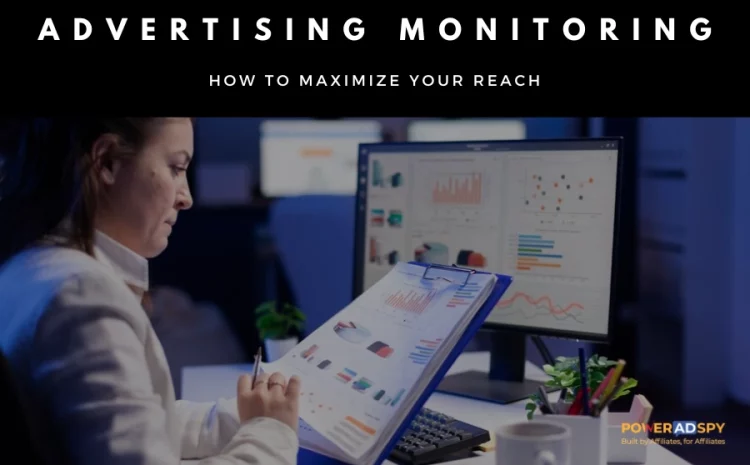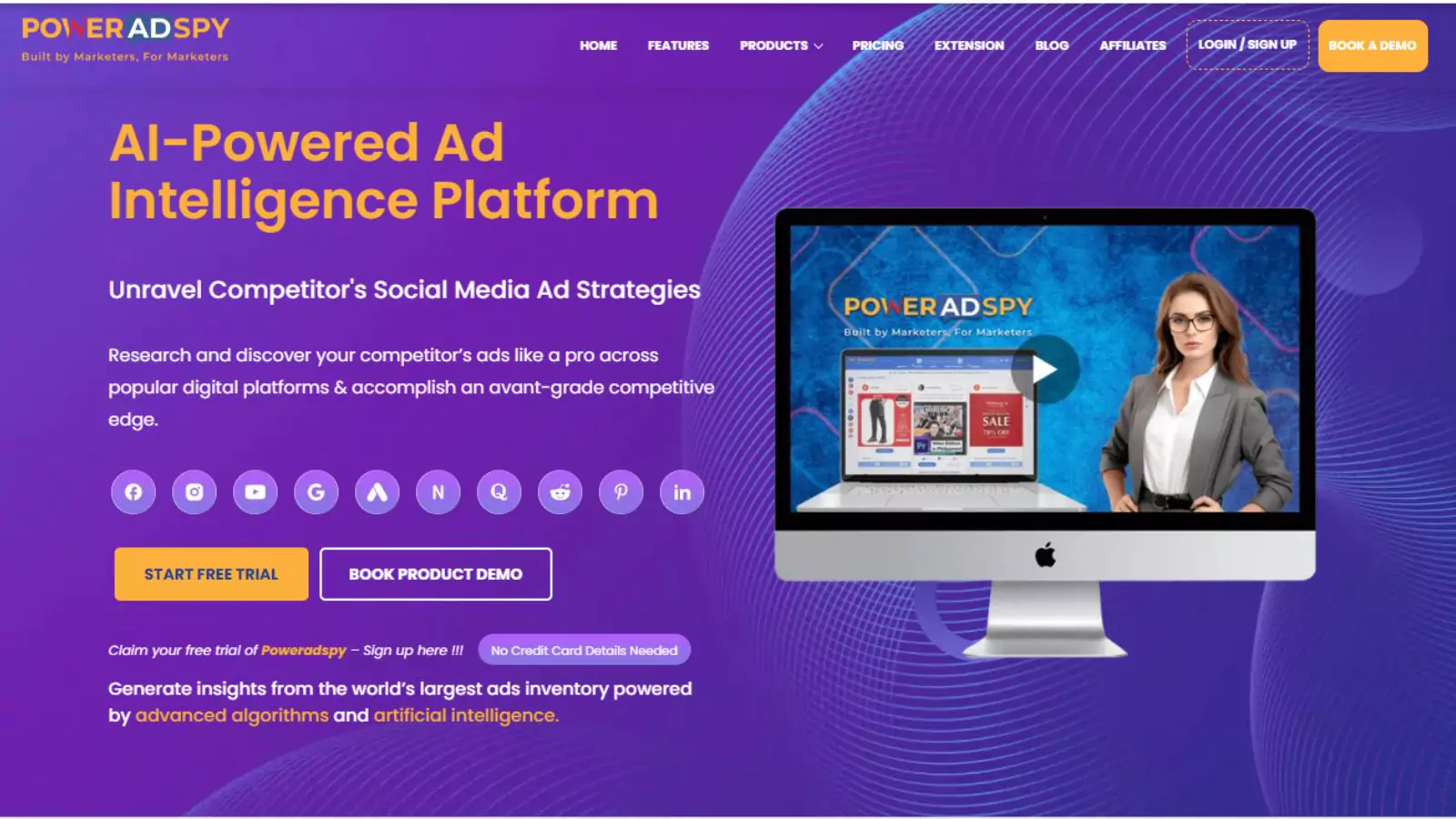The Power of Advertising Monitoring: How to Maximize Your Reach
Nowadays, staying on top of your advertising efforts is crucial. That is where advertising monitoring comes in. But what exactly is it? Simply put, advertising monitoring means keeping a close eye on how your ads are performing. It is about tracking every click, every view, and every conversion.
Did you know businesses that actively monitor their ads see up to 30% better performance? That is because they can quickly adjust their strategies based on real-time data.
In this blog, we will dive into how you can use advertising monitoring to boost your reach and get the most out of your ad budget. Ready to take your campaigns to the next level? Let us get started!
Hit ‘Play’ Button & Tune Into The Blog!
What Is Advertising Monitoring?
Advertising monitoring means methodically tracking and assessing the effectiveness of your advertising initiatives. It involves several tasks that gauge the effectiveness of your advertisements and spot areas of improvement
Fundamentally, advertising monitoring involves tracking many indicators associated with your advertisements, including impressions, click-through rates, conversions, and return on investment (ROI).
By following this process, you may determine which components are potent and which require modification. For example, you can identify the efficiency of your ad wording and target by tracking the number of individuals who click on your advertising vs the number of people who complete a purchase.
Analyzing data trends over time to make strategic decisions is another aspect of effective advertising monitoring. It can involve adjusting your target audience or allocating funds to more effective advertisements. Making educated judgments for upcoming initiatives requires more than just gathering data—it also requires analyzing it and ad tracking software like PowerAdSpy can help you achieve it.
Why is Advertising Monitoring Important in PPC Advertising?
The effectiveness of pay-per-click (PPC) advertising depends on its efficient management and optimization. As we know PPC advertising can be very effective in bringing conversions and traffic to your website, monitoring ads would help you to enhance your campaign to ensure success.
Let us look at the importance of advertising monitoring in pay-per-click advertising and how it may affect the outcome of your campaign.
Optimizing Ad Spend
The key benefit of PPC advertising monitoring is maximizing your advertising budget. You may determine which of your PPC ads results in clicks by regularly monitoring them. It makes it possible for you to spend your money more wisely. For instance, you can raise the budget for those potent aspects if you observe that specific keywords or ads generate high click-through rates (CTR) and conversions.
On the other hand, you can cut back on spending on ineffective advertisements. With this focused strategy, you can be sure that your advertising budget is going where it will have the best impact.
Identifying Top-Performing Ads
Advertising tracking is crucial to identifying which ads get the most hits and conversions. Advertisers can find their most successful advertising by examining performance indicators like click-through rates, conversion rates, and cost-per-acquisition.
By focusing your money on high-performing advertisements, you can optimize your return on investment and raise the general effectiveness of your PPC campaigns with this data-driven strategy.
Improving Conversion Rates
Ad tracking helps to improve conversion rates by providing insights into which ads achieve the highest conversion rates. By analyzing metrics like click-through rates, conversion rates, and user behavior, advertisers can identify which ad creatives, keywords, or targeting strategies are most effective.
This information allows you to make data-driven adjustments to your campaigns, such as refining ad copy, optimizing landing pages, or adjusting targeting criteria. If you focus on what works best, you can enhance the effectiveness of your ads and drive more successful conversions, ultimately boosting the overall performance of your PPC campaigns.
Testing Ad Variations
Monitoring ads could also help you test several ad types and determine which produces the best results. Advertisers can evaluate performance indicators like click-through rates, conversion rates, and engagement levels by comparing different ad elements, including headlines, pictures, calls-to-action, and offers, using A/B testing.
This method assists you in identifying the ad variations that your target audience responds to the best. You may improve your messaging, hone your ad creatives, and concentrate on the components that lead to higher performance with the help of this data. Better campaign outcomes and more effective advertisements are produced due to ongoing testing and tweaking processes.
Making Data-Driven Decisions
Good advertising monitoring gives you the information you need to make data-driven, well-informed decisions. You can access specific data regarding what is and isn’t working in your PPC ads, so you don’t have to rely just on speculation.
You can make strategic decisions using this data-driven approach that will improve the performance of your campaign as a whole and increase the efficacy of your advertisements.
Read More:
How To Monitor Ad Budget For Optimal ROI?
How Advertising Tracking Can Be Your Secret Weapon In 2024?
Types of Advertising Tracking
Advertisers utilize a variety of ad tracking methods under the umbrella of advertising monitoring to assess the effectiveness of their campaigns. Different forms of ad tracking are used by advertisers to measure and assess the effectiveness of their campaigns.
URL Tracking
URL tracking entails appending a particular tracking code to an advertisement’s target URL. When someone clicks on the ad, the tracking code is recorded, capturing valuable data. This data is then analyzed through the advertiser’s analytics platform, allowing them to monitor metrics such as click-through rates, conversions, and other key performance indicators. By understanding which ads drive the most traffic and engagement, advertisers can optimize their campaigns for better results.
Conversion Tracking
Conversion tracking focuses on monitoring what users do after they click on an ad. It could include completing a purchase, signing up for a newsletter, or filling out a contact form. By tracking these conversions, advertisers can see which ads are most effective at driving desired outcomes. This information is crucial for allocating budget to the ads that generate the best return on investment. It helps in fine-tuning ad strategies to enhance overall campaign performance.
Phone Call Tracking
Phone call tracking assigns a unique phone number to each ad campaign. When a user calls this number, the call is recorded in the advertiser’s analytics platform. It allows advertisers to track how many calls each ad generates, providing insights into the effectiveness of their ads in driving phone inquiries. Phone call tracking is helpful for businesses that rely on phone leads, such as service-based industries. It helps them understand which ads prompt users to take action and call, enabling better resource allocation and strategy refinement.
Session Tracking
Session tracking goes further by monitoring user behavior on a website after clicking on an ad. This type of tracking provides a detailed view of user interactions, such as how long they spend on the site, which pages they visit, and whether they complete any desired actions. By analyzing this data, advertisers can identify areas where users might lose interest. This information is valuable for improving website usability and enhancing the overall user experience, leading to higher conversion rates. Session tracking helps advertisers understand the customer journey and make data-driven decisions to optimize their campaigns.
Each of these tracking methods offers unique insights and advantages. By leveraging a combination of URL tracking, conversion tracking, phone call tracking, and session tracking, advertisers can understand their ad performance.
This multiple-aspects approach enables them to make informed decisions, allocate resources effectively, and continually improve their advertising strategies. Ultimately, the goal is to maximize the return on investment and achieve better outcomes from ad campaigns.
Common Ad Tracking Metrics
Ad tracking involves analyzing various metrics to gauge the performance of an advertising campaign. The most common metrics used in ad tracking include impressions, click-through rate (CTR), conversion rate, cost-per-click (CPC), and return on investment (ROI).
Impressions
Impressions represent the number of times an ad is shown to users. Each time an ad appears, it counts as an impression, regardless of whether the user interacts with it. Advertisers track impressions to understand the reach of their campaign and the number of potential customers exposed to their ad.
Click-Through Rate (CTR)
CTR quantifies the proportion of users who click on an advertisement after viewing it. It is computed by dividing the total number of impressions an advertisement generates by the total number of clicks it receives. This metric helps advertisers assess how effectively their ad captures user interest and prompts engagement.
Conversion Rate
The conversion rate indicates the percentage of users who complete a desired action after clicking on an ad, such as purchasing or filling out a form. To calculate this, divide the number of conversions by the number of clicks. This metric is crucial for understanding how well an ad drives leads and sales, allowing advertisers to evaluate the ad’s overall effectiveness.
Cost-Per-Click (CPC)
An advertiser must pay a certain amount (CPC) each time one of their ads is clicked. This cost is determined by the ad platform’s bidding system and factors such as ad relevance, quality, and competition for ad space. Advertisers use CPC to evaluate the cost-efficiency of their campaigns and monitor ad budgets more effectively.
Return on Investment (ROI)
ROI measures the revenue generated from an ad campaign relative to the money spent on it. It is calculated by dividing the campaign revenue by its cost. ROI is a crucial metric for advertisers as it indicates the profitability of their campaigns, guiding them in budget allocation and campaign adjustments.
These advertising monitoring and tracking metrics will help you track the best ad campaigns and create strategies for your campaigns. You can also use various ad tracking tools like PowerAdSpy. It will help you spy on your competitor’s ad campaigns, letting you create the best strategies. Let us explore more features of this ad tracking software.
PowerAdSpy – The Best Ad Tracking Software
PowerAdSpy is a powerful AI-driven ad intelligence tool that provides advertisers with extensive competitor ad insights. This ad spy tool is highly beneficial for businesses aiming to develop optimal ad strategies.
PowerAdSpy enables advertisers to analyze various ad strategies to craft the best-performing ads for their businesses.
Here are some of the vital features of PowerAdSpy that you can use in context with different advertising monitoring.
- Massive Ad Library PowerAdSpy offers access to an extensive database of millions of ads from over 100 countries, allowing users to easily review their competitors’ ads. This feature makes it simple to discover successful ads with just a few clicks.
- Ad Search With PowerAdSpy, users can search for ads using keywords, advertiser names, domains, or other criteria, helping them find relevant ads within their specific niche or industry.
- Ad Analytics This tool provides in-depth analytics for ads, including engagement metrics like likes, shares, and comments, as well as detailed information about ad performance and target audience demographics.
- Targeting Insights PowerAdSpy offers insights into the targeting options used in ads, such as demographics, interests, behaviors, and placements. This information helps users optimize their targeting strategies.
- Ad Creatives Users can view ad creatives, including images, videos, and ad copy, to understand the messaging and design strategies employed by competitors.
- Bookmark the Best Ads PowerAdSpy allows users to save detailed insights from their ad searches, including audience profiles. Ads can be bookmarked with a single click and stored in a personalized inventory, facilitating intricate ad strategizing.
Conclusion
Advertising monitoring is crucial for optimizing ad campaigns and maximizing your budget. You can gain valuable insights into your ad performance By leveraging ad monitoring techniques like URL tracking, conversion tracking, and session tracking.
PowerAdSpy, the best ad tracking software, provides comprehensive tools to spy on competitors and enhance ad strategies. Use these insights to make data-driven decisions, improve conversion rates, and ensure your advertising efforts deliver the best results. Stay ahead of the competition and take your campaigns to the next level with effective ad monitoring.
Frequently Asked Questions
Can advertising monitoring help with competitor analysis?
Yes, it can. By monitoring competitors’ ads, you can gain insights into their strategies, identify industry trends, and benchmark your performance against theirs. This helps in crafting more effective and competitive ad campaigns.
Is advertising monitoring only for large businesses?
No, businesses of all sizes can benefit from advertising monitoring. Even small businesses can gain valuable insights to improve their marketing efforts and compete more effectively.










